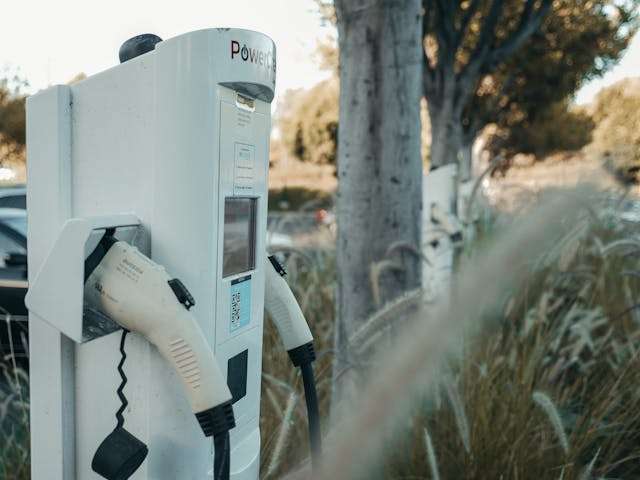
Electric vehicles (EVs) have rapidly gained traction in the automotive industry, offering a cleaner and more sustainable mode of transportation. With the surge in EV adoption, concerns regarding EV safety have come to the forefront, particularly in comparison to traditional gasoline-powered vehicles. However, EV manufacturers have been diligent in implementing advanced safety features to address these concerns and ensure the safety of both occupants and pedestrians alike. One of the most pressing debates in this regard is the safety of electric cars vs gasoline vehicles. In this article, we explore the top five safety features that every EV should incorporate, shedding light on the advancements that contribute to making electric cars safer than ever before.
- Collision Avoidance Systems
Advanced Driver Assistance Systems (ADAS) are indispensable safety features that utilize advanced sensors, cameras, and radar to detect potential collisions and alert the driver or intervene autonomously to mitigate or avoid accidents altogether. These systems include features like Automatic Emergency Braking (AEB), Forward Collision Warning (FCW), and Lane Departure Warning (LDW), which help prevent accidents caused by driver distraction or inattentiveness. By proactively identifying and responding to potential hazards, collision avoidance systems significantly enhance the safety of EVs, reducing the likelihood of collisions and their associated injuries.
- Structural Integrity and Crashworthiness
The structural integrity and crashworthiness of a vehicle play a pivotal role in determining its safety performance during collisions. EV manufacturers invest heavily in designing robust vehicle structures that effectively absorb and dissipate crash forces, protecting occupants in the event of an accident. Furthermore, advancements in materials like high-strength steel and aluminum alloys contribute to enhancing the structural integrity of EVs while minimizing weight, thereby improving both safety and efficiency. Rigorous crash testing and simulation techniques ensure that EVs meet stringent safety standards, providing occupants with peace of mind and confidence in their vehicle’s safety performance.
- Pedestrian Detection and Alert Systems
As the number of electric vehicles on the road continues to rise, ensuring the safety of pedestrians has become increasingly important. Pedestrian detection and alert systems utilize advanced sensors and cameras to detect pedestrians in close proximity to the vehicle, issuing visual or audible alerts to the driver and even autonomously applying the brakes if a potential collision is imminent. By prioritizing pedestrian safety, EV manufacturers not only protect vulnerable road users but also bolster the overall safety reputation of electric cars compared to their gasoline counterparts.
- Battery Safety Management Systems
One of the primary concerns associated with EVs revolves around their high-voltage battery packs. The best warranty on the market currently is offered by VinFast, a new electric vehicle company, it allows owners to replace it for up to 125,000 miles driven if performance falls below a specified level. While incidents of battery-related accidents are exceedingly rare, EV manufacturers prioritize the implementation of robust Battery Safety Management Systems (BSMS) to mitigate any potential risks. These systems continuously monitor the battery’s temperature, voltage, and state of charge to prevent overheating, overcharging, and short circuits. Additionally, advancements in battery design, such as reinforced casing and thermal management systems, further enhance the safety of EV batteries, minimizing the risk of thermal runaway or fire.
- Fire Suppression and Emergency Response Systems
While electric vehicle battery fires are exceptionally rare, EV manufacturers prioritize the implementation of comprehensive fire suppression and emergency response systems to address any potential incidents swiftly and effectively. These systems include flame-retardant materials, automatic battery disconnect mechanisms, and onboard fire suppression systems that can quickly extinguish any fires that may occur. Additionally, EVs are equipped with emergency response guides and protocols to assist first responders in safely managing battery-related incidents. By proactively addressing fire safety concerns, EV manufacturers demonstrate their commitment to ensuring the safety of both vehicle occupants and emergency responders.
Electric vehicles continue to redefine the automotive landscape, offering a compelling blend of sustainability, performance, and safety. Through the integration of advanced safety features such as Battery Safety Management Systems, Collision Avoidance Systems, Pedestrian Detection and Alert Systems, Structural Integrity, and Crashworthiness enhancements, as well as Fire Suppression and Emergency Response Systems, EV manufacturers are steadfastly committed to prioritizing the safety of their vehicles and occupants. While concerns regarding EV safety persist, these innovative safety features underscore the significant strides that have been made in bolstering the safety of electric cars compared to their gasoline counterparts. As EV technology continues to evolve, so too will the safety features that ensure safe travels for all road users in the electrified future.